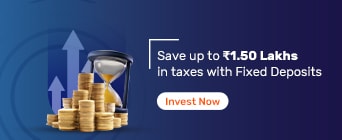Under Section 115BAC, taxpayers can opt for concessional tax rates, subject to some conditions mentioned under the Income Tax Act, 1961.
An alternative tax regime under Section 115BAC was announced in the Budget 2020. It introduced concessional tax rates without considering the legal mandates required for exemptions or deductions. You can choose between the old and the new tax rates based on your financial situation.
Any individual or HUF with income from sources apart from their profession is eligible to make claims under Section 115BAC of the Income Tax Act, 1961. However, their declared income must not cover any of the business income.
The income calculation for this is done without considering any exemptions or deductions provided under the following provisions:
Chapter VI-A (except those mentioned u/s 80CCD and 80JJAA)
Clauses (5), (13A), (14), (17), and (32) of sections 10, 10AA, and 16
Section 24b
Sections 35, 35AD, and 35CCC
Sections 32(1), 32AD, 33AB, and 33ABA
Clause (iia) of Section 57
In addition to the above, the income calculation should not reflect the following:
Previous assessment years’ losses resulting from deductions mentioned above
Losses from residential property owned by the taxpayer
Deductions or exemptions for any allowances or benefits
Claims related to depreciation u/s 32 clause (iia)
The income tax slabs under the new tax regime have been changed in the Budget 2023.
Here is an overview of the rates falling under new tax regime under Section 115BAC of the Income Tax Act:
New Tax Regime Slab Rates 22-23 (Pre-Budget) |
New Tax Regime Slab Rates 23-24 (Post-Budget) |
||
Up to ₹2.5 Lakhs |
Nil |
Up to ₹3 Lakhs |
Nil |
₹2.5 Lakhs to ₹5 Lakhs |
5% |
₹3 Lakhs to ₹6 Lakhs |
5% |
₹5 Lakhs to ₹7.5 Lakhs |
10% |
₹6 Lakhs to ₹9 Lakhs |
10% |
₹7.5 Lakhs to ₹10 Lakhs |
15% |
₹9 Lakhs to ₹12 Lakhs |
15% |
₹10 Lakhs to ₹12.5 Lakhs |
20% |
₹12 Lakhs to ₹15 Lakhs |
20% |
₹12.5 Lakhs to ₹15 Lakhs |
25% |
Over ₹15 Lakhs |
30% |
Over ₹15 Lakhs |
30% |
|
|
Given below is an overview of tax slabs and rates for the alternative tax regime and old tax regime:
Old Tax Regime Slab Rates |
New Tax Regime Slab Rates |
||
Income Levels |
Tax Rate |
Income Levels |
Tax Rate |
₹2.5 Lakhs to ₹5 Lakhs |
5% |
₹3 Lakhs to ₹6 Lakhs |
5% |
₹5 Lakhs to ₹10 Lakhs |
20% |
₹6 Lakhs to ₹9 Lakhs |
10% |
Above ₹10 Lakhs |
30% |
₹9 Lakhs to ₹12 Lakhs |
15% |
|
₹12 Lakhs to ₹15 Lakhs |
20% |
|
Above ₹15 Lakhs |
30% |
||
*Note: Over 70 deductions and exemptions are not applicable under the new tax regime.
Given below is a table illustrating the tax you would have to pay under the old or new tax regime without claiming deductions for the financial year 2023-24:
Income Level (Post Standard Deduction) |
Old Tax Regime |
New Tax Regime |
Tax Savings Under the New Regime |
Up to ₹7.50 Lakhs |
₹65,000 |
₹31,200 |
₹33,8000 |
Up to ₹10 Lakhs |
₹1.17 Lakhs |
₹62,400 |
₹54,600 |
Up to ₹12.50 Lakhs |
₹1.95 Lakhs |
₹1.04 Lakhs |
₹65,000 |
Up to ₹15 Lakhs |
₹2.73 Lakhs |
₹1.56 Lakhs |
₹1.17 Lakhs |
Disclaimer: The above calculation is just an illustration. Actual tax liability may vary.
Here are some permissible deductions in the new tax regime:
Conveyance allowances owed in lieu of performing officer duties
Costs associated with business travel and transfers
Daily allowance provided in certain circumstances will be exempt
Deductions featured under sections 80JJAA and 80CCD (2)
Transportation costs of a specially-abled person
Costs involved in the purchase of business and official prerequisites
Gifts of up to ₹5,000
Exemptions on gratuity u/s 10(10), voluntary retirement 10(10C), and leave encashment u/s 10(10AA)
Interest accrued on a housing loan (let-out property) as specified under Section 24
In addition to the above, the following provisions were also added to the Section 115BAC deduction list after Budget 2023:
Standard deduction of ₹50,000 from financial year 2023-24
Deduction under Section 57 (iia) for expenses related to income from family pension
- Deduction for deposits in the Agniveer Corpus Fund under Section 80CCH (2)
If individuals and HUFs choose to file their taxes under Section 115BAC of the Income Tax Act, they will not be allowed to make the following deductions:
Children Education Allowance (CEA)
Helper allowance
House Rent Allowance (HRA)
Leave Travel Allowance (LTA)
Minor child income allowance
Entertainment allowance
Additionally, deductions made under business income will not be considered as per the new regime outlined in Section 115BAC. In accordance with this rule, here is a list of some deductions you cannot claim in the alternate tax regime:
Additional depreciation, as mentioned under Section 32
Investment allowance, as made clear under Section 32AD
Sector-specific business deductions made clear in Sections 33ABA and 33AB
Expenditure incurred owing to scientific research, as mentioned in Section 35
Capital expenditure defined in Section 35AD
Exemptions made clear under Section 10AA for SEZ units
Note that the above is not an exhaustive list of deductions and allowances exempt under the new tax regime. You can find the complete list on the income tax website.
Opting for the new regime means you cannot claim deductions and exemptions of the old regime
Taxpayers can choose either the new or old regime; neither option is mandatory
The new regime was made the default tax regime from FY 23-24
Individuals cannot choose the new regime if they have any business income in the given fiscal year
- The same surcharge rate is applicable for both regimes, except when the income is above ₹5 Crores, resulting in the rate going down to 25% from 37%
Frequently Asked Questions
Which entities are entitled to use Section 115BAC of the Income Tax Act?
Individuals and Hindu Undivided Families (HUFs) can opt for the new tax regime provided they qualify as per the provisions under Section 115BAC.
Is choosing the new tax regime mandatory?
Using this taxation style is not mandatory, and you can opt for either the new or old regime. However, the new tax regime is now the default one. If you want to choose the old regime, ensure you do so before you start filing your return.
What deductions are not permissible in the new tax regime?
As per the provisions of the new tax regime under Section 115BAC of the Income Tax Act, 1961, you cannot claim Chapter VI-A deductions with some exceptions. You also cannot claim certain allowances, such as children’s education, HRA, and LTA. You can find all the deduction rules on the income tax portal.
Who should opt for the new tax regime u/s 115BAC of the Income Tax Act?
Individuals with deductions under ₹1.5 Lakhs are likely to benefit more by choosing the alternate tax regime. This is because the regime offers concessional rates.
How is the old and new tax regime different in terms of income tax slab rates?
The alternate tax regime, as per Section 115BAC, offers concessional rates compared to the old regime. The new regime also has more tax slabs than the previous regime, which has only 3 slabs.
Can I choose between the new tax regime and the existing regime?
Yes, provided you are either an individual or HUF with no income from business or profession. Remember, the new regime is the default tax regime, and you can make the switch only before you file the return.
Quick Links





